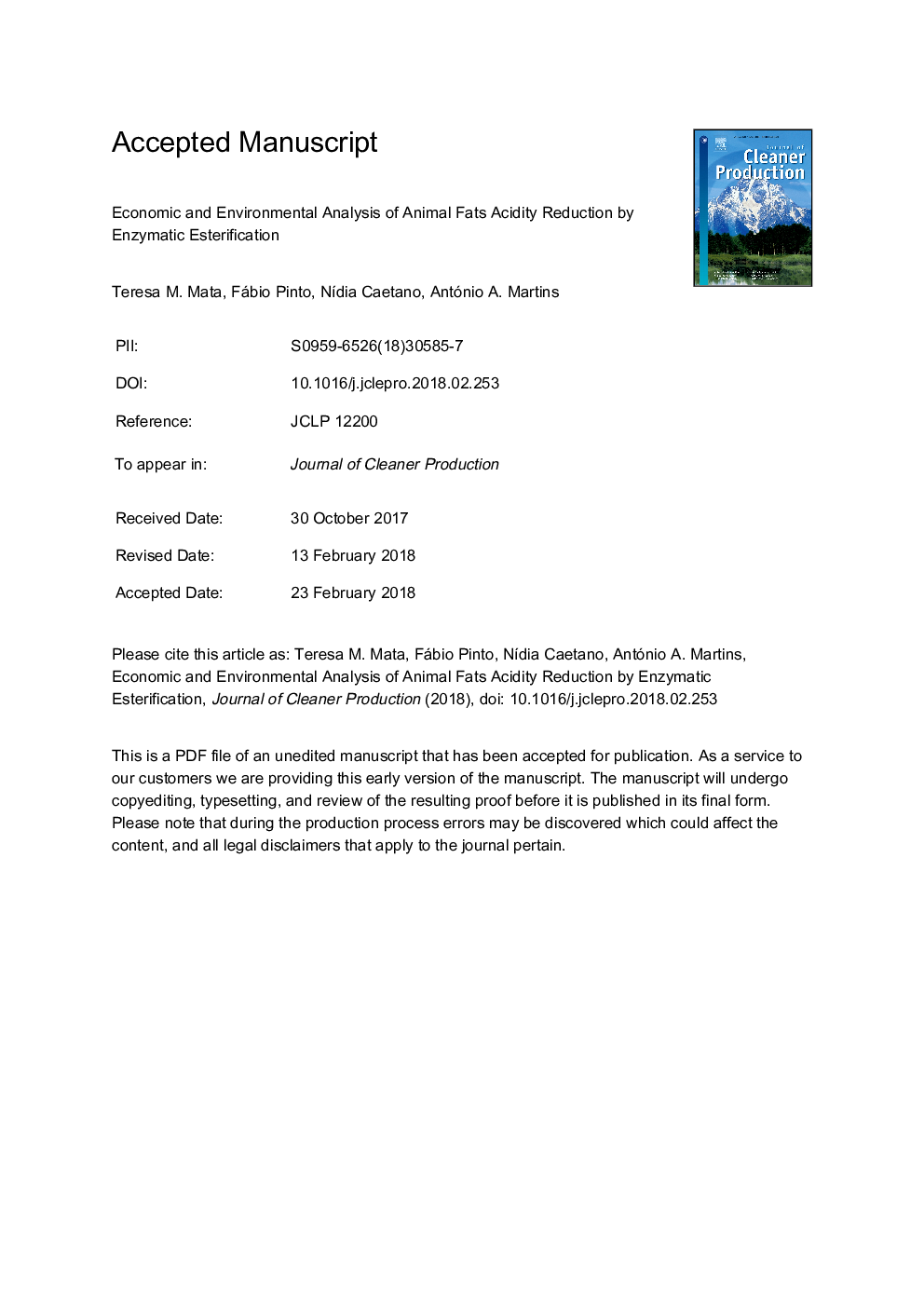| Article ID | Journal | Published Year | Pages | File Type |
|---|---|---|---|---|
| 8096733 | Journal of Cleaner Production | 2018 | 36 Pages |
Abstract
This study examines the economic potential of reducing the acidity of animal fats (fish oil, poultry and mammalian fats) by enzymatic esterification, when applied at industrial scale in a Portuguese company, and determines its carbon and water footprints as a measure of its potential environmental impact. Cost and revenue data were obtained from real industrial and commercial sources, complemented with literature and life cycle inventory data for the environmental impact calculations. Based on esterification experiments, for optimizing operating conditions and enzymes selection, two scenarios are analyzed in this work, using ethanol 96% (v/v) as reagent, and the following enzymes commercialized by Novozymes as catalyst: (1) Lipozyme®CALB L for fish oil and mammalian fat and Novozym®435 for poultry fat; (2) Lipozyme®TL 100L for fish oil and Lecitase®Ultra for mammalian fat. Results show that under current conditions the new process for the fats acidity reduction is not economically viable. To be feasible the cost of enzymes should decrease to at least 9.75 â¬/kg and 1 â¬/kg for treating, respectively, the fish oil and the mammalian fat. Alternatively, the sale price of fish oil alone and of fish oil and mammalian fat together, should increase at least 3 and 4% respectively, to ensure that the process is cost effective. For the process operating conditions defined in this work, it is estimated a carbon and water footprints of, respectively, 1.3â¯t CO2 eq/t fat and 574â¯m3 water/t fat for the new esterification process, corresponding to minor increases in the footprints of the current company processes.
Keywords
Related Topics
Physical Sciences and Engineering
Energy
Renewable Energy, Sustainability and the Environment
Authors
Teresa M. Mata, Fábio Pinto, NÃdia Caetano, António A. Martins,
